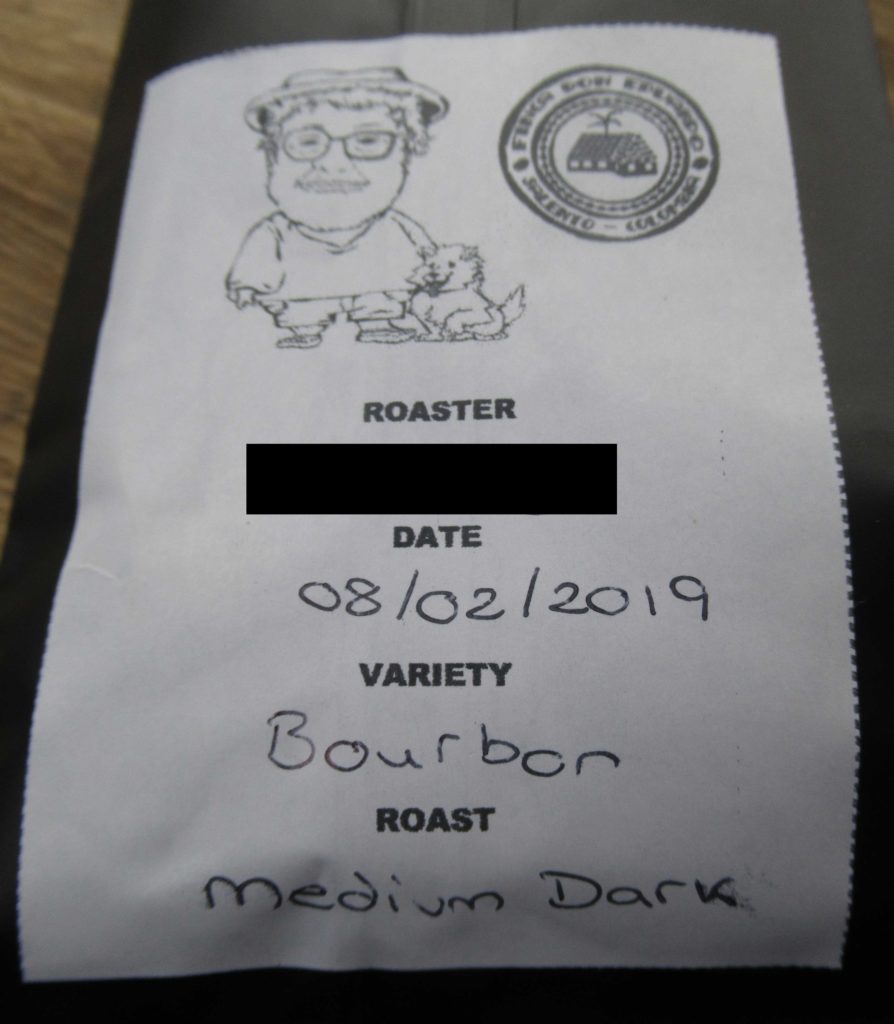Coffee in Salento
COFFEE TIME! 🙂
Colombia is the home of coffee in South America, and we had upped our consumption accordingly 🙂 It was time to take our first ‘coffee tour’. Coffee tours are run all over the coffee regions of Colombia – they generally involve a visit to a coffee plantation, an explanation of the coffee-making process, and some tastings.
We were starting in a very lazy manor, by going on the coffee tour which was run by our hostal – right next to town. The owner of the hostal – and the man doing the tour – was an English guy called Tim, who had married a Colombian and moved to Colombia 16 years ago. He had planted a bunch of coffee around his land, and made small batches of coffee.
The tour structure was a two hour talk about coffee (yes, it’s amazing how much there is to learn about coffee! :-)), a stroll down to the farm area where the coffee plants were growing, a tasting session, and then whichever coffee was the ‘favourite’ of the group on the tour would be roasted there and then in a pan, and made into coffee for each person to drink a cup.
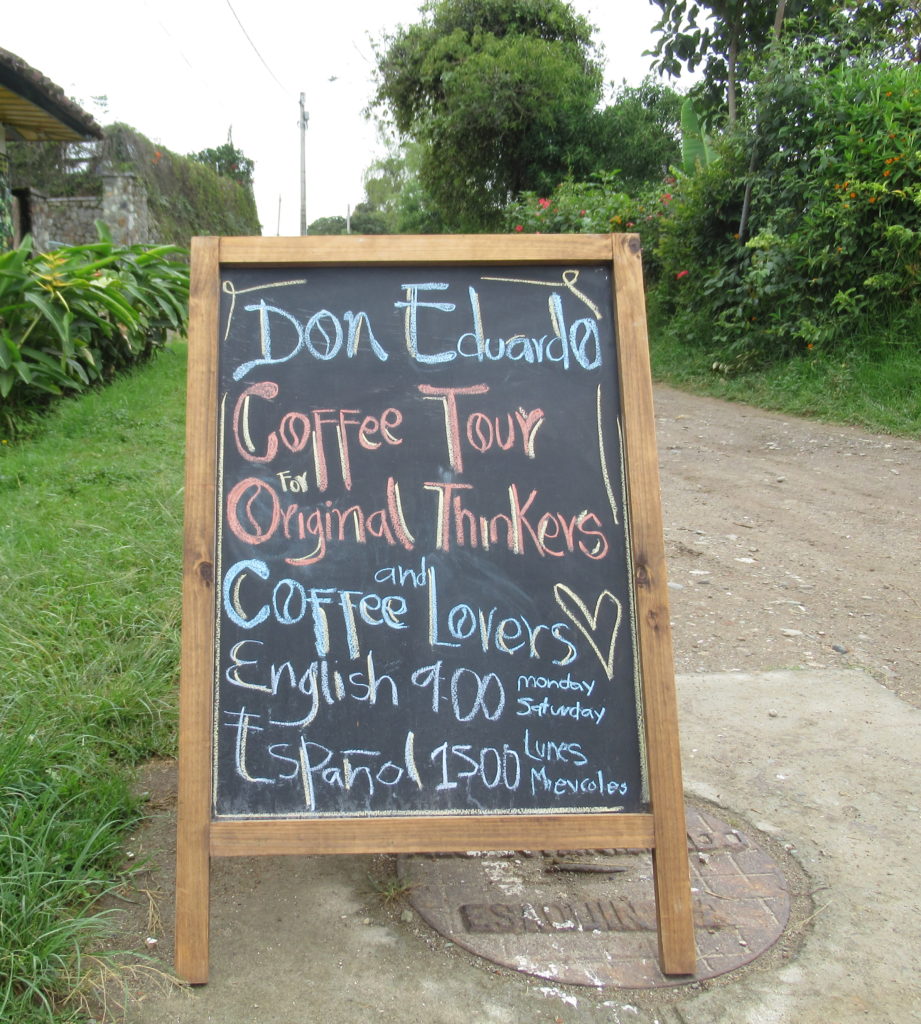
So… where to start…. two hours of verbal information about coffee is a lot of information! 🙂 Well, first of all – Colombia is the third highest producer of coffee in the world (after Brazil and Vietnam). BUT…it is the highest producer of arabica coffee in the world. There are two main types of coffee grown around the world for consumption – arabica and robusta.
Arabica is the ‘high-end’ coffee, and all ‘gourmet’ coffees are of the arabica variety. Robusta is the ‘low-end’ coffee (cheaper, much easier to grow) and is used mostly to make instant coffee. Arabica only grows on mountain slopes in the tropics – it is originally from Ethiopia (eg. original wild coffee plants are from the Ethiopian mountains). Like wine, there are different ‘varietals’ of coffee – and the taste of the coffee will depend on the terrain that the coffee grows on – eg. the soil, the microclimate, the altitude etc.
The mountains of Colombia are ideal for growing coffee – with volcanic soil, lots of rain, and thousands of acres of land at the ideal altitude. In Colombia, coffee is traditionally grown in lots and lots of very small farms, as opposed to in large plantations. There are around 500,000 small, mostly family-owned farms in Colombia which produce coffee! They are represented by the National Federation of Coffee Growers of Colombia.
Now…. you might be thinking that you haven’t seen very much coffee labelled with the type of bean, the origin of the coffee, and the process by which is was made… so how is coffee like wine?! Well, if you imagine taking a glass of red wine and adding coca cola (yes, it’s a thing… see Kalimotxo) then it wouldn’t really matter what the red wine tasted like, as the cola would disguise the taste. Coffee is mostly drunk with added milk and sugar, and so the subtle differences in the coffee flavours are not important.
‘Varietal’ coffee is a relatively recent phenomena, and it’s not mass-market in the way that wine is. Lots of people don’t even like to drink black coffee with no sugar – which is the only way you can really taste the subtle differences. In Colombia, locals drink coffee with added ‘panela’ (unrefined cane sugar) – which they call a ‘tinto’. For this reason, when farmers here harvest their coffee they keep all the ‘rubbish’ coffee (this is the actual word they use in spanish: ‘basura’) for themselves to make ‘tintos’ – and the good stuff is sold to be sent overseas.
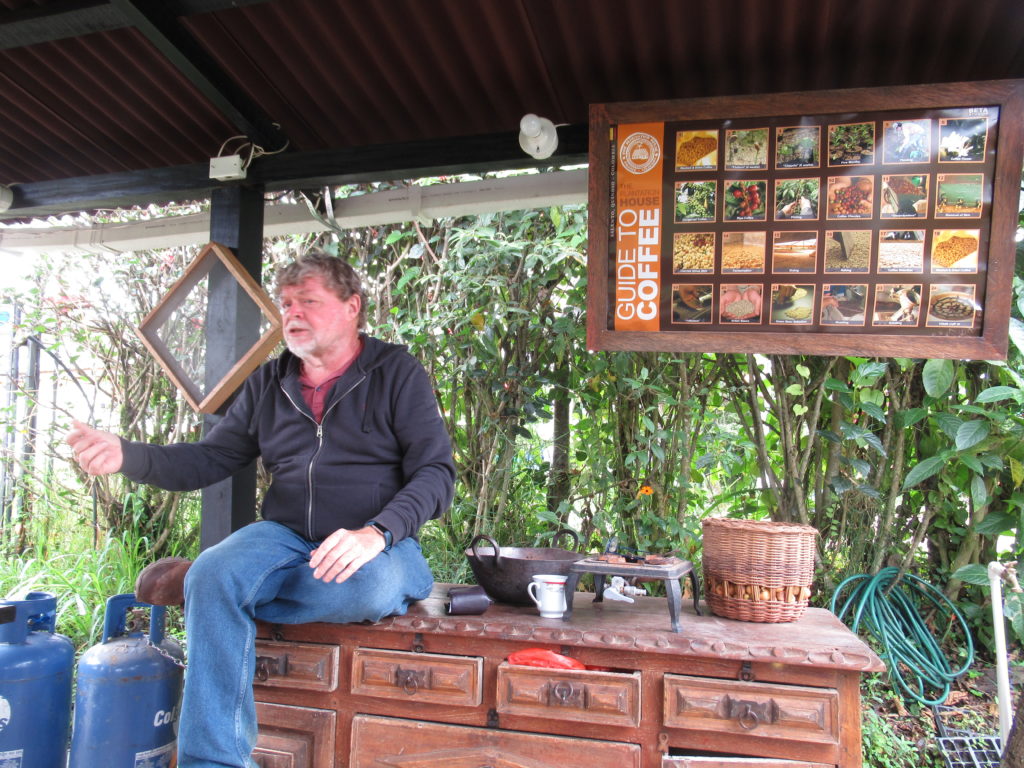
After the overview of coffee in general, the tour headed down to the farm and we learned about the specific process of turning coffee plants into an actual coffee drink. So, where does this process start… with a coffee tree! Coffee trees are ‘bush-sized’, have glossy green leaves, white flowers, and ‘cherries’ (the fruit of the tree). The ‘cherries’ are the starting point for coffee production – when they are red and ripe they are picked. They turn red throughout the year, so coffee-picking is a consant process – but more intense in the wetter months of the year, as more ‘cherries’ ripen then.
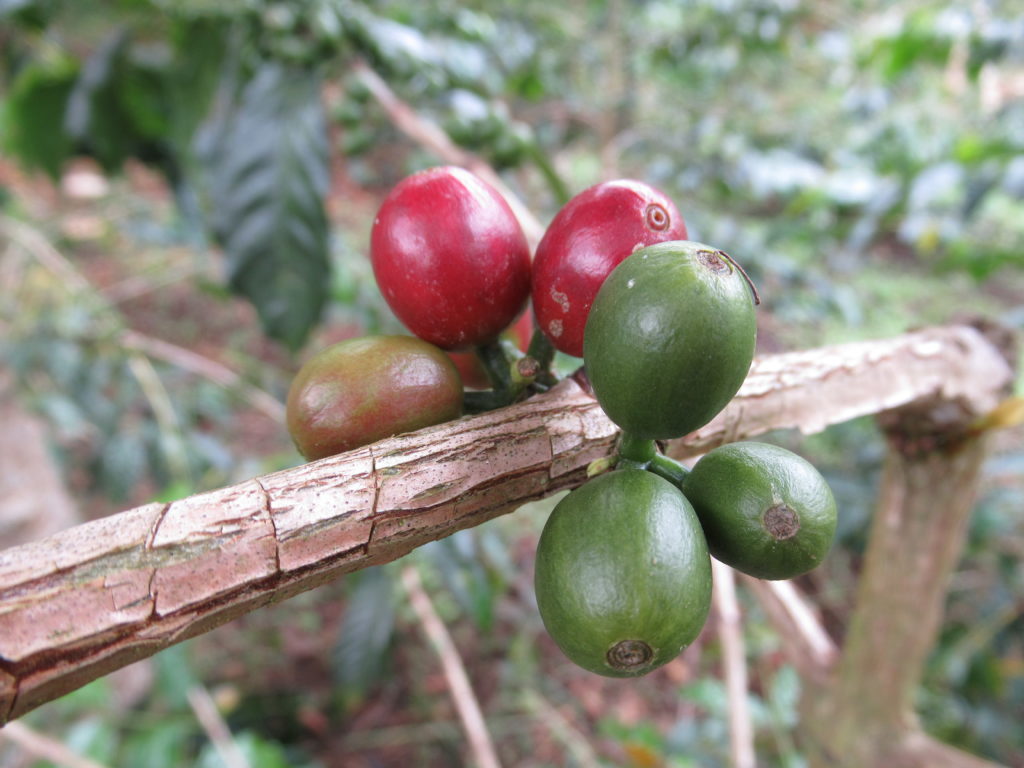
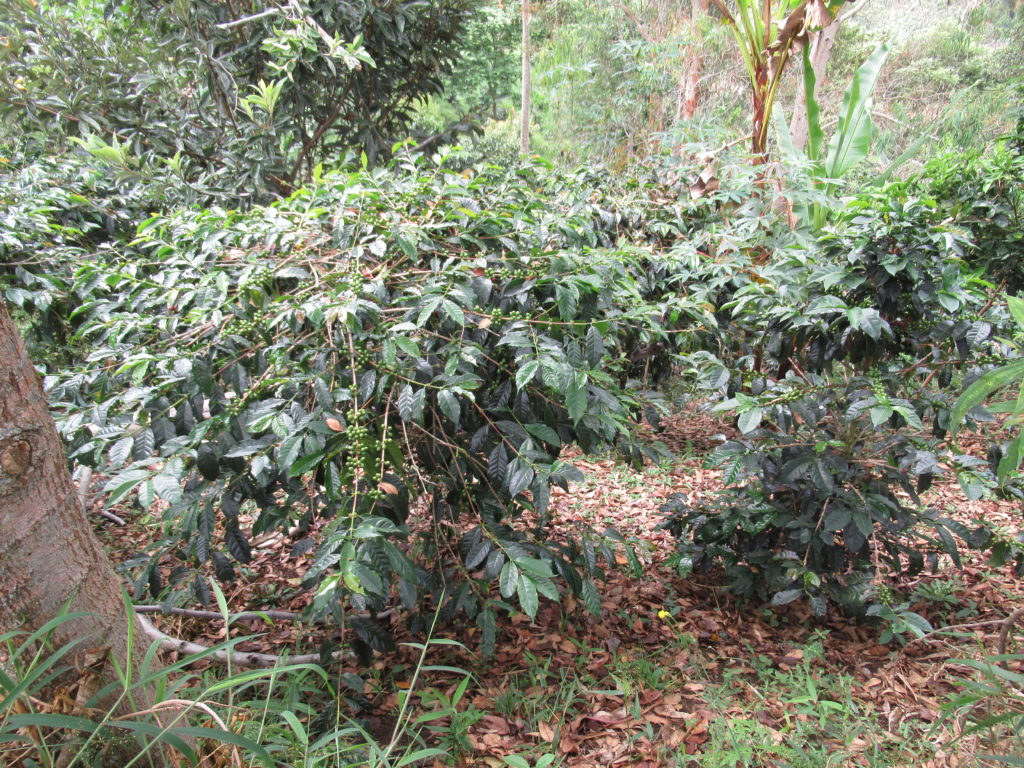

There are a few different ways to prepare the final product from the coffee cherries – and without going into too much detail the process is as follows:
The cherries contain two seeds – which are commonly called ‘coffee beans’. The ‘beans’ have two skins on them – a ‘parchment’ (also know as ‘pergamino’), and a ‘silver-skin’. Depending on the specific process used, the cherries and/or beans are dried, the parchment is/is not removed, the beans are/are not washed, and then the last stage is that the beans are roasted. When the beans are roasted the silver-skin falls off and can be removed (where it is know as ‘chaff’). At the end of it all, you have the familiar looking product of some roasted coffee beans. Yes, quite a LOT of effort goes into making that nice bag of coffee beans!
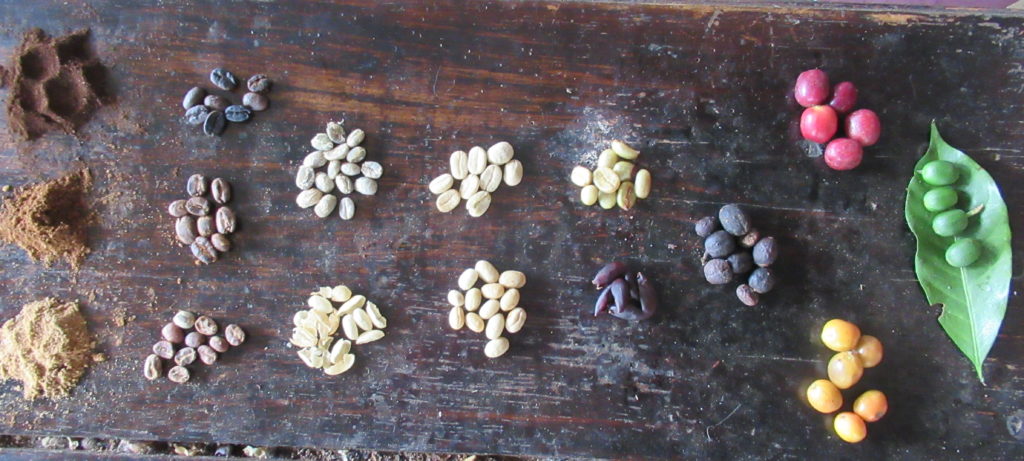
After we had learnt all about the way in which the coffee cherries are processed, it was time for the tasting – YEAH! 🙂 The tasting consisted of two varietals of coffee, with each varietal roasted to light, medium, and dark roasts. So therefore a total of six options. The two coffee varietals were ‘caturra‘ from the farm, and ‘castillo‘ from another farm nearby (sadly, the harvest on Tim’s farm had been poor recently, and the farm had run out of its other coffee varietals!!)
Everybody in the group tasted the six options, and the option that came out on top was the castillo with a medium to dark roast (somewhere in between the flavour of the medium option and the dark option). The opinion in the group was quite evenly split – but we both preferred the castillo, but with a more medium roast. Tim didn’t seem too upset that the group preferred somebody else’s coffee!!
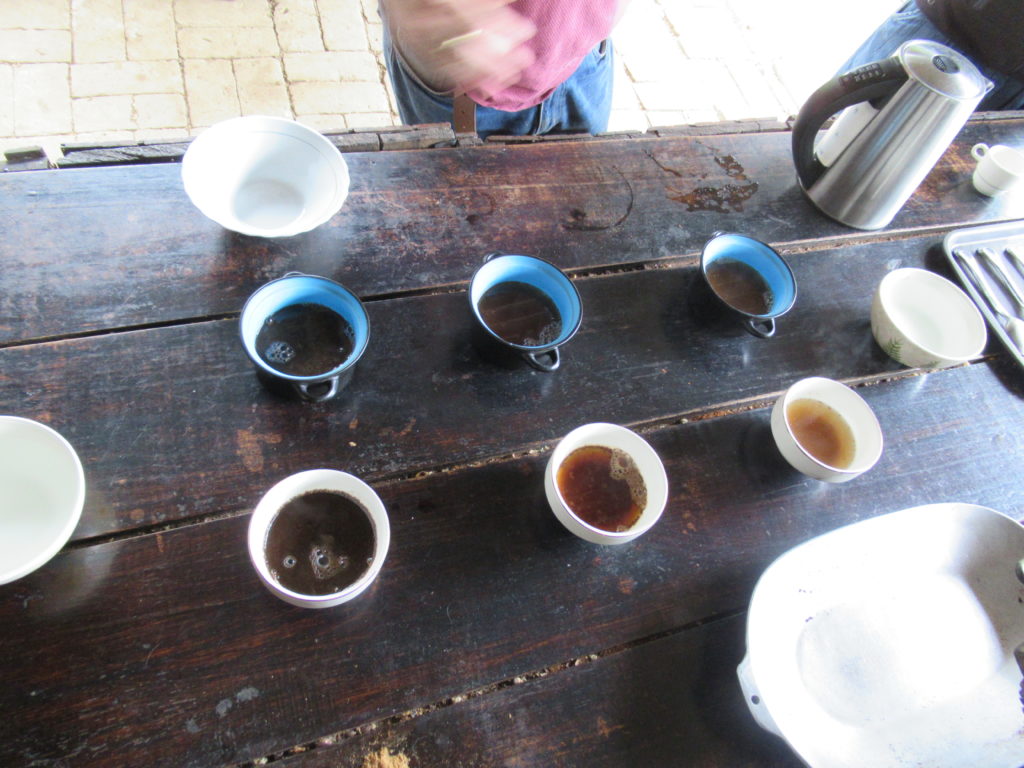
With the coffee tasting over, Tim departed and left his assistant to prepare the chosen coffee. The selected beans had their parchment layer removed, and then were roasted to medium/dark and ground before our very eyes!
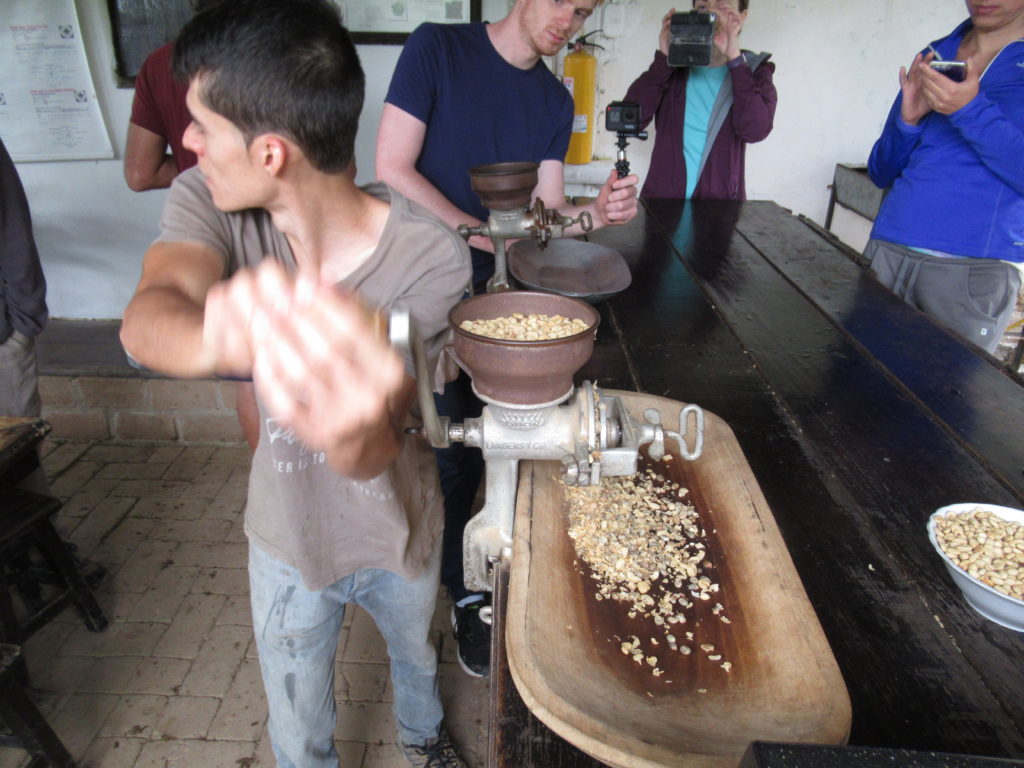
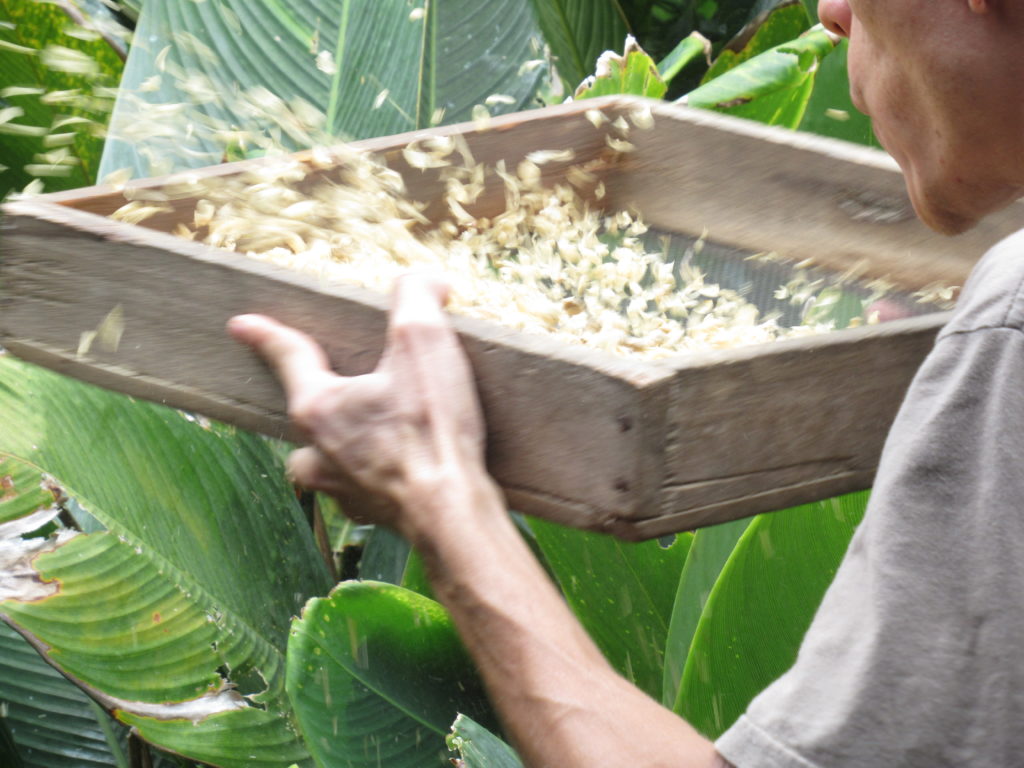
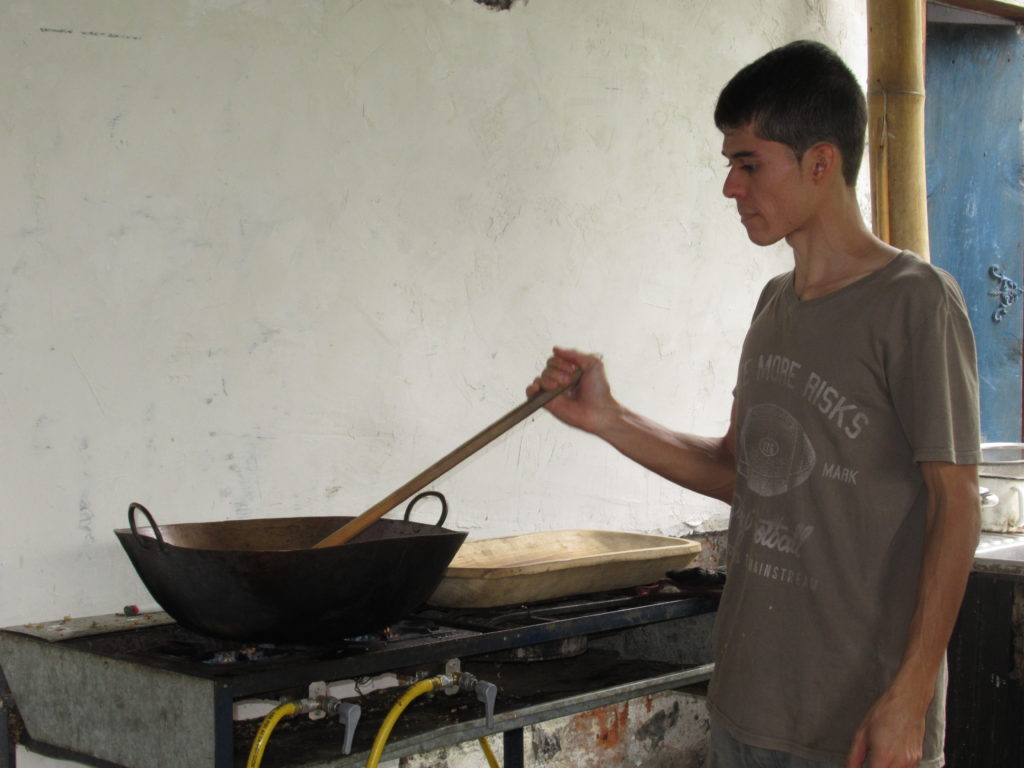
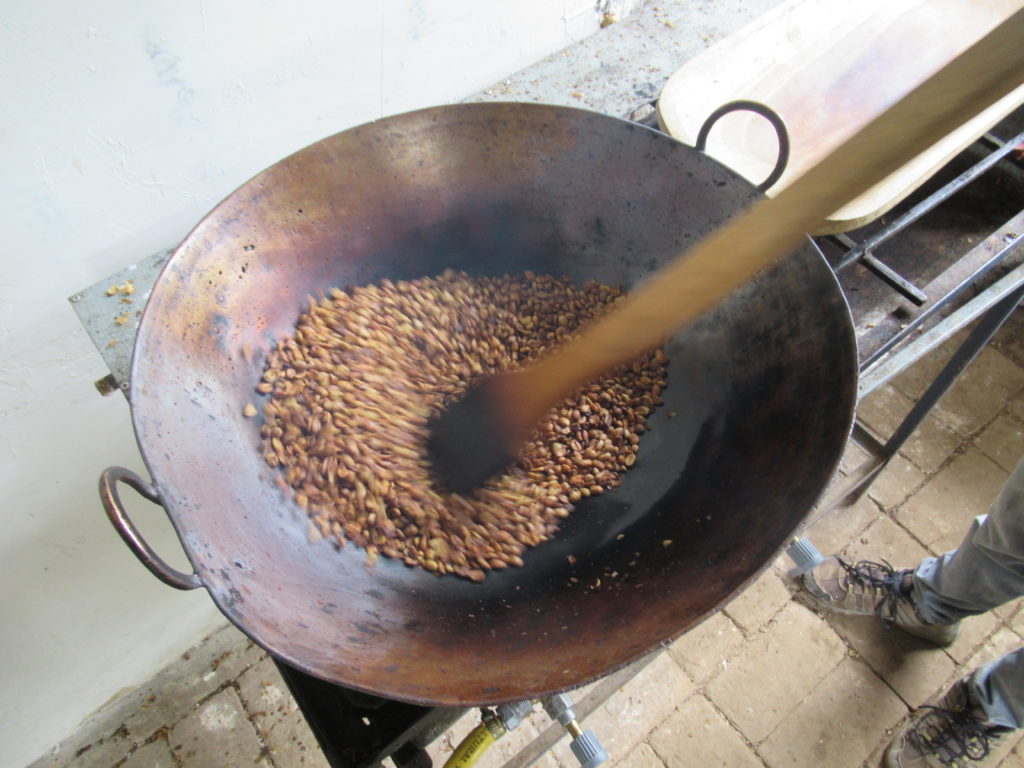
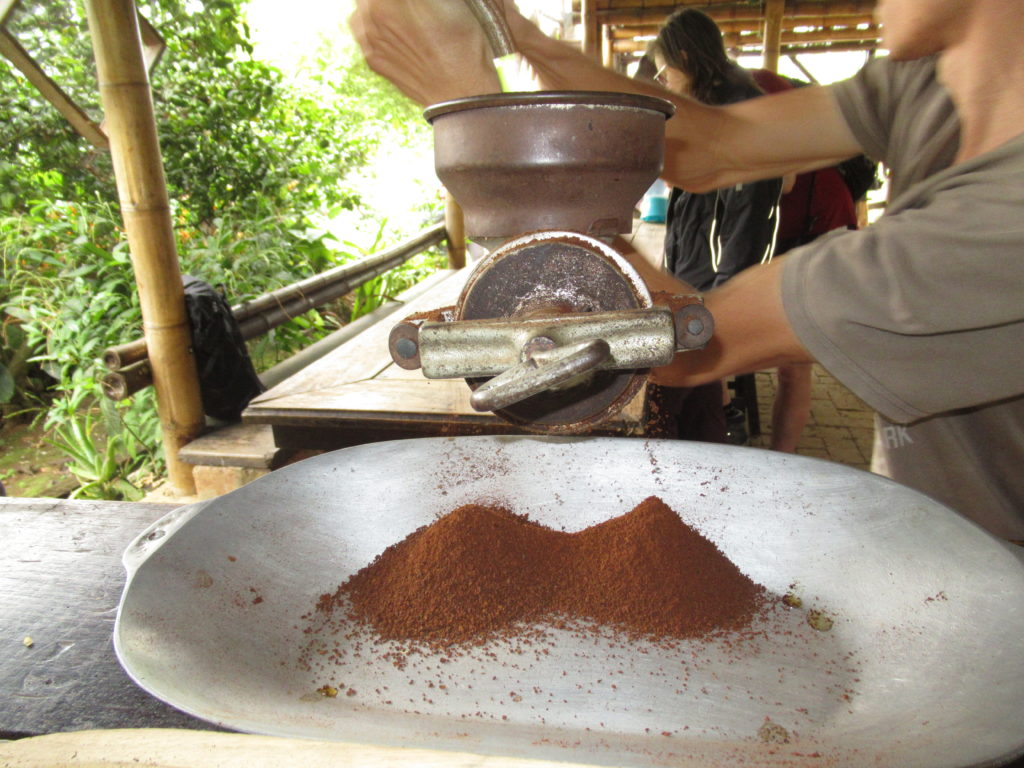
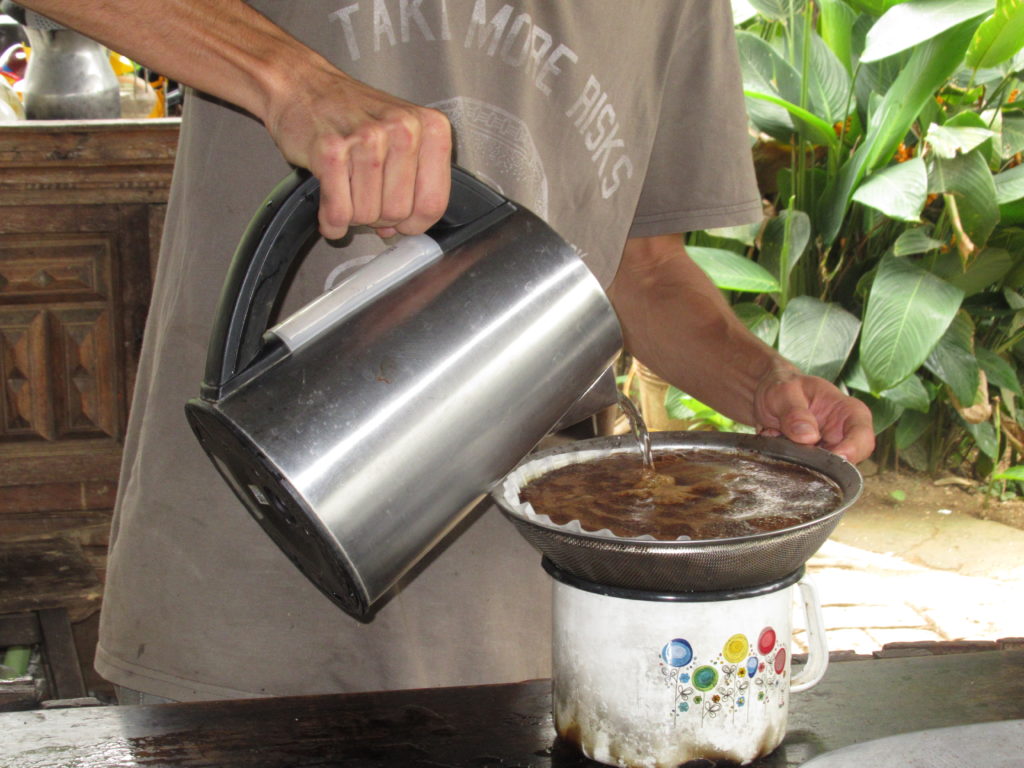
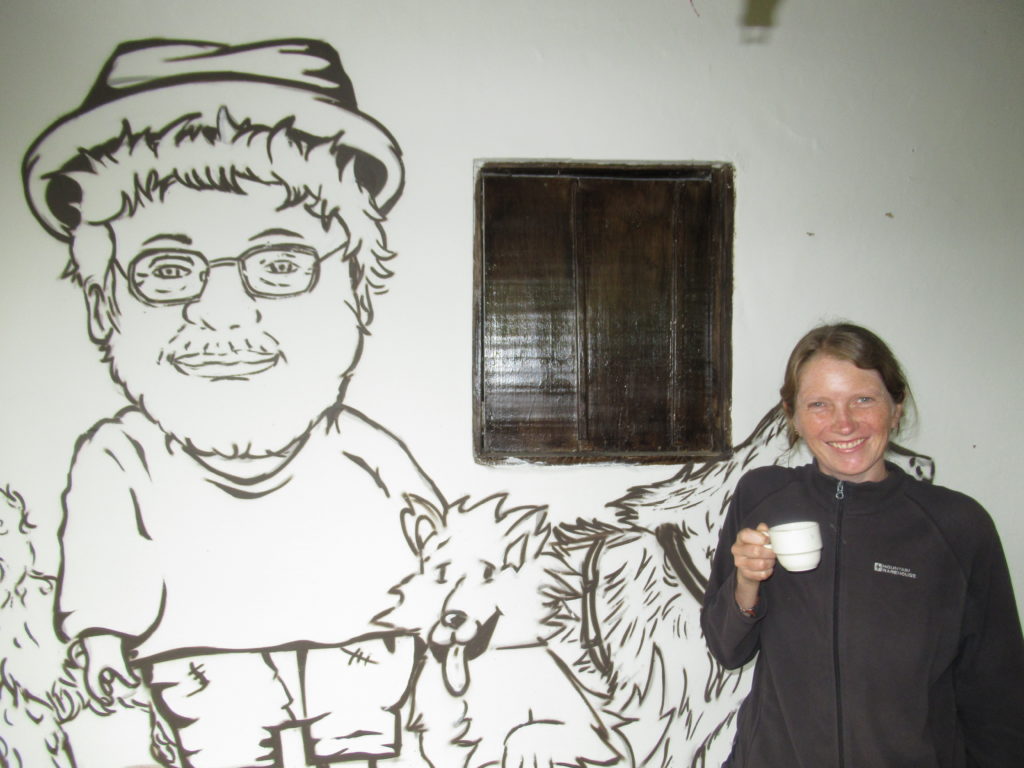
It had been a really interesting and fun morning learning all about coffee – it was the start of what became a slight obession 😉 with coffee during our time in Colombia!!

HOWEVER – our coffee adventure was not over yet! No, that’s because we had also booked in to do some coffee roasting of our very own!! 🙂 Yes, I told you that we had become slightly obsessed by coffee!
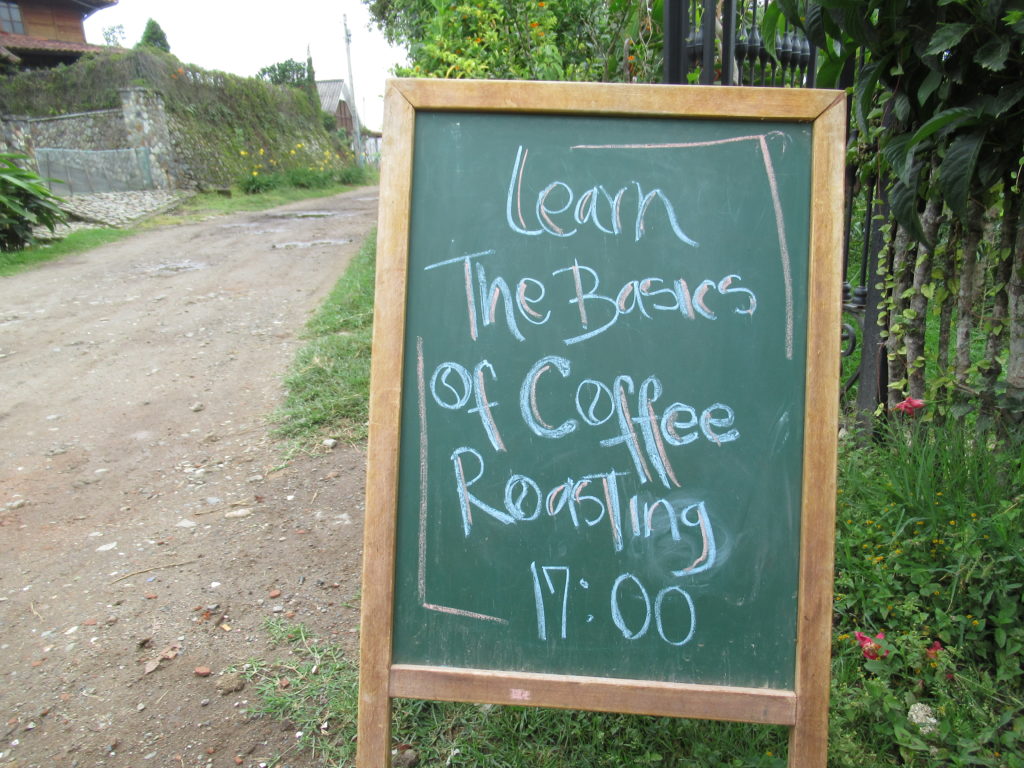
So, the next day we were back! The coffee roasting experience is pretty much just picking the type of coffee that you want to roast, and the level of roast that you would like to have (eg. light, medium, dark). Then you get some ‘green’ beans (eg. unroasted coffee beans), put them in a wok, and ROAST AWAY! 🙂
The idea behind it is to have some fun doing the roasting, and take away a bag of coffee that you have roasted yourself for later consumption. It is also to demonstrate that you can in fact ‘home-roast’ coffee. ‘Green’ coffee beans can apparently be bought online easily, and also from speciality coffee places all over the world – so you can buy your own beans and then roast them at home to your own specification! WHAT FUN! 🙂 We made a promise to ourselves to buy and roast coffee beans when we got back to Australia 🙂
For our roasting session in Salento, we chose the varietal ‘bourbon’ – and we nominated CC as the ‘chief roaster’ 🙂

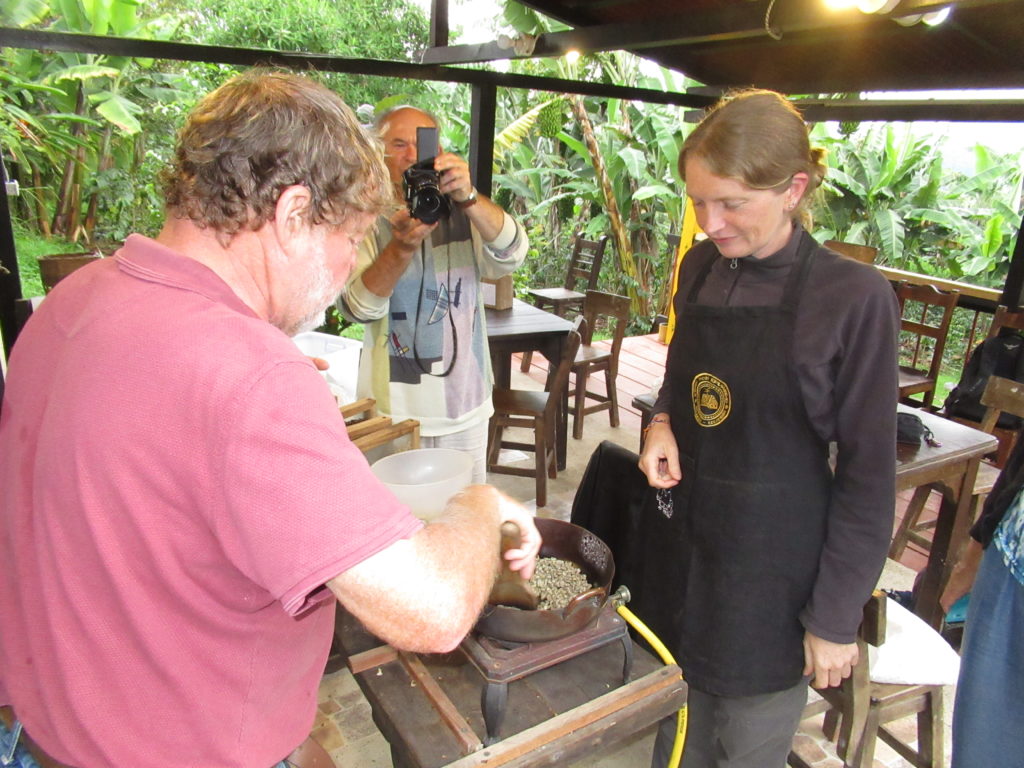
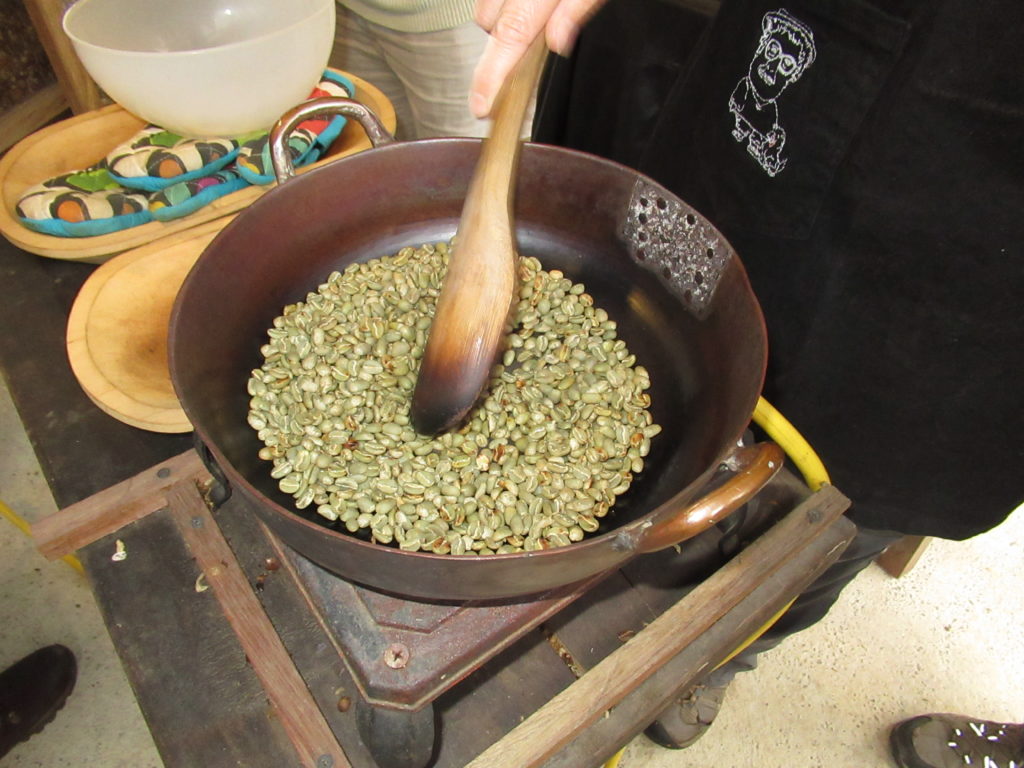
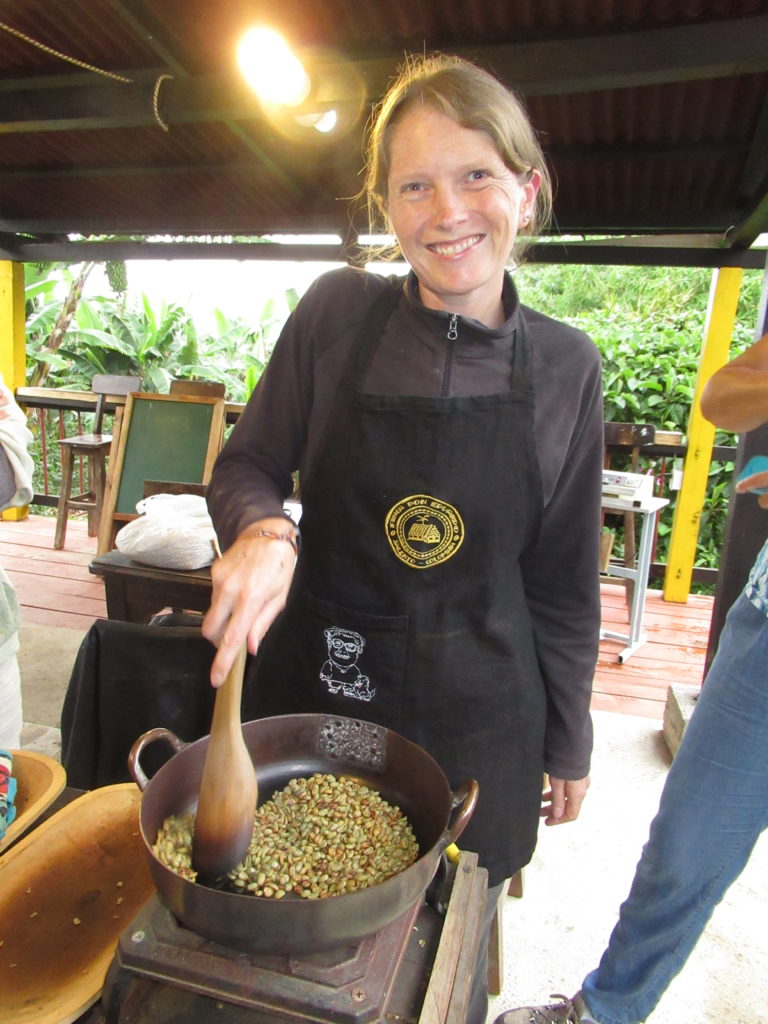
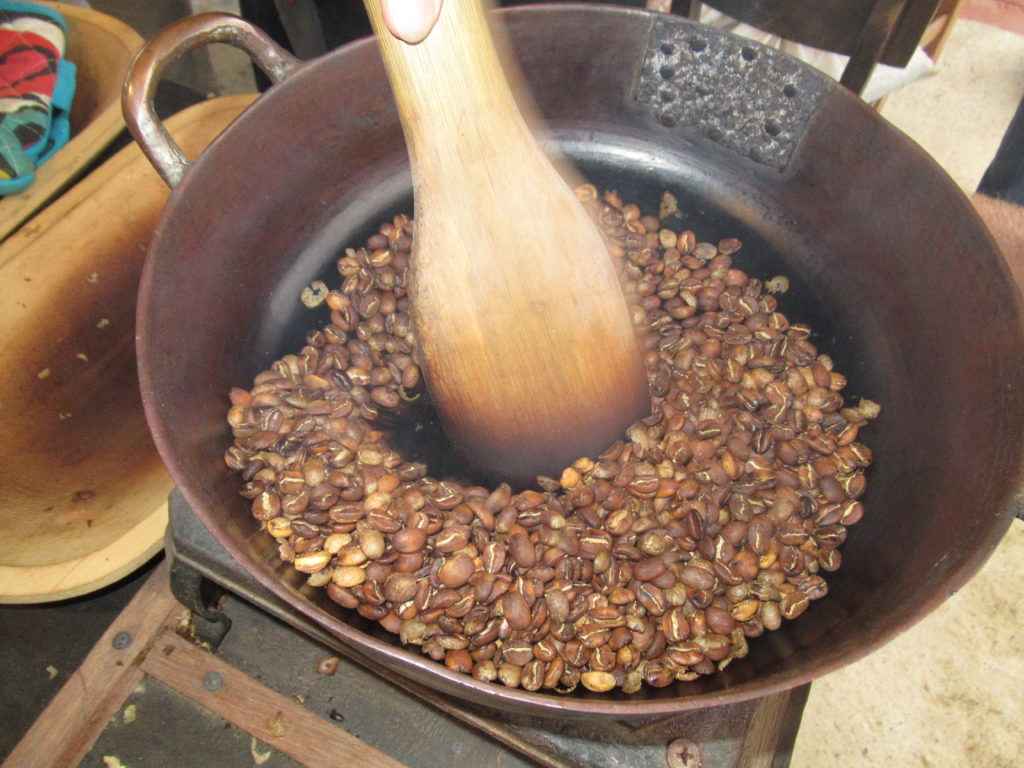
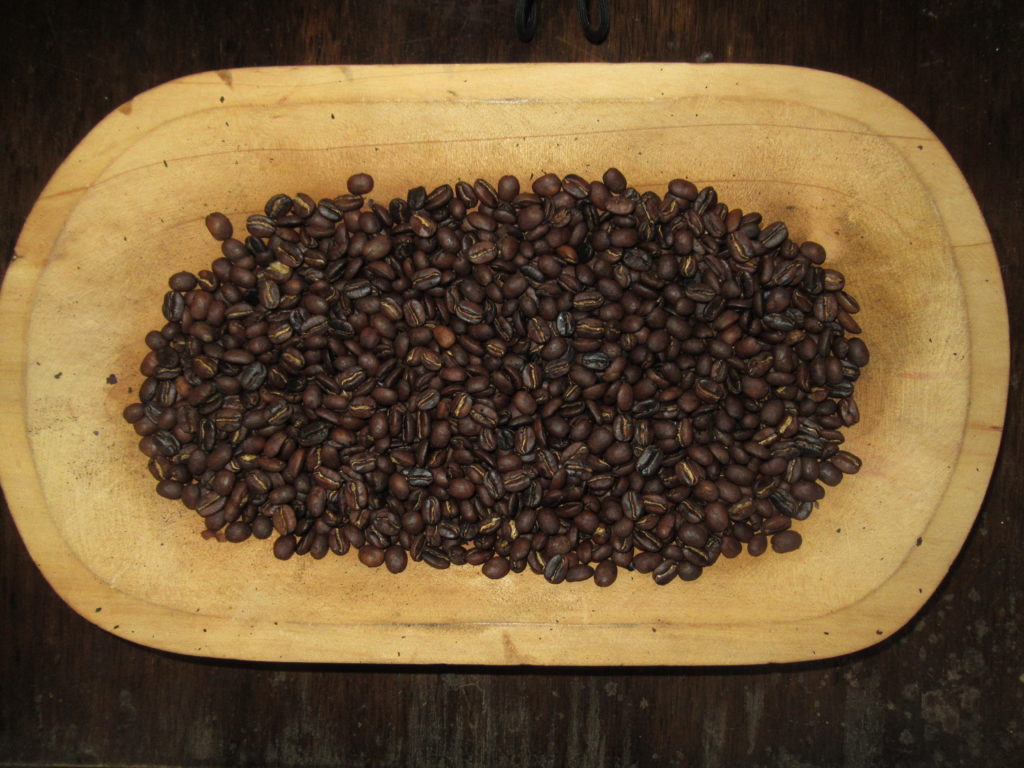
The roasted beans were then neatly packaged and ready to take away! Because we weren’t going to have access to a coffee grinder for a while, we got some of the beans ground and ready to go – so we could drink our own roasted coffee while we were still in Colombia! 🙂 RESULT!

